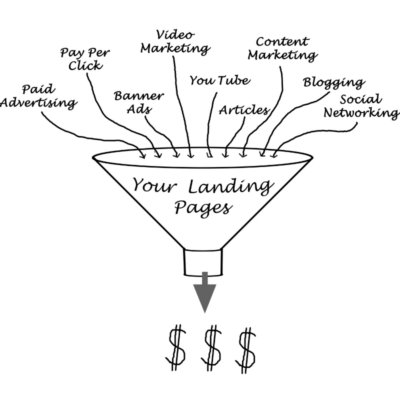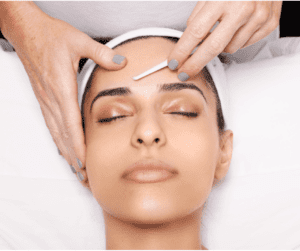Do you have a marketing funnel?
Also known as a conversion funnel, sales funnel or lead generation funnel, if you run your own business, it’s something you may have heard of and dismissed as marketing jargon.
But here at WCM, we’re big fans of a well-thought-out digital marketing funnel. So, we’re here to tell you why a funnel is so much more than jargon, and how a good funnel could take the guess-work out of nurturing and converting new leads for your business.
What is a marketing funnel?
A marketing funnel or sales funnel is way of viewing the journey your customers take from discovering your business to making a purchase, as well as your marketing efforts that guide them along the way.
When people discover a business, they very rarely decide to make a purchase or engage their services right away. More often than not, they’ll discover a brand, check them out online, do some competitor research, and take some time to decide if it’s the right product, service and brand for them before committing. While from the outside it might seem like this process is entirely driven by the customer, behind the scenes, there’s a team of marketers making sure these new leads get the information they need at exactly the right time, to increase the chances of them converting when it comes to the crunch. This is a marketing funnel in action.
But why it called a funnel?
Picture a funnel. It’s wide at the top and gets gradually narrower towards the bottom. The same can be said of your audience as they go through the customer journey. A lot of people may come across your brand at the ‘top of funnel’ stage. The ones whose interest has been piqued will move to the middle of your funnel to find out more. As people naturally drop off throughout this process, your audience will get smaller, until those who make it to the bottom of the funnel are the ones who are ready to give your brand a try by making a purchase or engaging your services.
You may also be familiar with the phases of the customer journey: brand awareness, consideration, purchase, retention and advocacy. This happens in parallel or conjunction with a marketing funnel. Customers at the top of the funnel are in the awareness phase of the customer journey, those in the consideration phase are in the middle, and those who purchase have made it all the way to the bottom.
How does it work?
A funnel is more than just a kitchen implement or a way to conceptualise the customer journey. It’s also a way to organise and implement your marketing activities and content. A well-executed marketing funnel builds trust, and makes the customer journey feel smooth and organic. Giving people the wrong type of content at the wrong stage of the funnel can be jarring and even harmful for your brand. For instance, going for the hard sell when someone is in the top of funnel stage is unlikely to work, could waste your ad spend and even annoy your new lead so much that they’re put off your brand for good. Using a funnel to structure your ads and content is how you avoid this!
Marketing funnels in action
Here’s how it can work at each stage.

Top of funnel:
People in the brand awareness stage are at the top of your funnel. This is where you’ll be reaching the largest audience, as top of funnel activities typically have a low barrier to entry, like engaging with free content or viewing your ads. Because those at the top of the funnel aren’t ready to buy, instead you should focus on telling them what your brand is all about, answering a question or solving a problem for them. The top of the funnel is when you begin to create trust, and show people that you can provide enough value that they think it’s worth engaging again, or doing further research on your business.
Top of funnel activities:

Top of funnel content:
Middle of funnel
People in the middle of the sales funnel are in the consideration stage of the customer journey. Maybe they’ve engaged with your brand a handful of times and experienced some of the value you have to offer. Enough to start considering you as an option to solve whatever problem they’re looking to solve. At this point, they’ll want to know more specifics about your product or services, and how you differ from your competitors. They’re still weighing up their options and probably doing their own research on your competitors, so it’s still not the time to hit them with the hard sell. Instead, focus on content that will differentiate your brand, and continue to build trust following on from the top of funnel content.
Middle of funnel activities:
Middle of funnel content:
Bottom of funnel
If your funnel has done its job, people at the bottom of the funnel should be very nearly ready to make a purchase or engage your services. This is the smallest group of leads, because they’ve done the hard yards of researching, engaging with your content and deciding whether your brand is right for them. But that’s what makes them primed and ready to convert! And if you’ve built a good funnel, you will have gently guided them along on that journey without them even knowing it
Bottom of funnel activities:
Bottom of funnel content:
What happens next?
If your funnel has successfully guided someone all the way from the top, through to conversion, it doesn’t end here. The next two stages of the customer journey are retention and advocacy. They’re often overlooked in favour of focusing on new leads and conversions, but given that it’s cheaper to retain customers than get new ones, they’re incredibly important! So much so that we think they’re worthy of their own blog post in the future. So, stay tuned and start working on your funnel in the meantime
At WCM, we specialise in full-funnel lead generating digital marketing strategies. If you’re to start building out your marketing funnel and want some expert help along the way, get in touch today.












